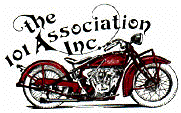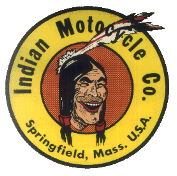Sorry to say, but that rear hub is worn. It is worn either because a poor fitting sprocket has been mounted or the nut has unravelled. It takes only one occation of a loose nut to nearly ruin the hub! And the danger when the sprocket can move if only a very minute amount to and fro, is that the nut WILL unravel after a while and the sprocket will wear the hub more or worse, throw the chain at speed!
Repairing the hub is difficult, best repair is to cut off the old snout and weld on a new one. New snout with splines has been marketed somewhere. It it is really important to make both the rear and front sprocket to sit firmly on the splines and that goes for the rear brake drum as well!
One remedy is to fabricate a ring that utilise the remaining long splines at the backside, a ring (better be hardened) that is snug on the splines but slides over the painted portion of the hub, and weld that ring to the sprocket.
Really the sprockets should sit snug on the splines hard enough that it is needed to lightly tap them on with a rawhide hammer! There is no cushions anywhere from the crankshaft to the tire like in modern bikes, so the forces are tremendous when the chain slaps going through potholes, lugging the engine or retarding!
Another thing noticed is the small sprocket is worn more on one side than the other, the chain line should be inspected, one problem can be that the distance slugs at the end of the hub are put on the wrong side. In the 101 R&O manual, George made an instruction on how the chain line can be corrected. The frame rear should be measured up, the rear fork should be in center of the frame but with unknown history can be bent slightly over to one side as well...
Ensure that the small sprocket is hardened! The example below shows a soft sprocket with ruined splines after just a few miles of running. Even if the nut did not loosen up firsthand, the forces deformed the splines. Mount a soft sprocket is absolutely useless and can be dangerous!
A unravelled sprocket nut will spin the sprocket on the fine threads on the final gear and that is catastrophical. So prevent that nut from spin off completely is very important. A nut locking device can't be enough emphasized!
In the example picture, the soft washer bent up against the flat was compromised by the forces of the sprocket rocking motion. However the screw head, placed like that did positively prevent the nut from coming off. A hex washer as on the crankshaft nuts, might have broken off and that would not have prevented the nut from undoing.
Still, I always use Locktite on all threads all over the bike. I'd use red, hard on those large nuts. Locktite is always possible to loosen with a bit of heat. A professional hair dryer is often hot enough and does not discolour steel or aluminium.
Make or buy proper good fitting tools for the special nuts. Making them takes a while but it is very rewarding.


